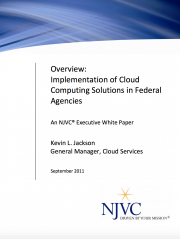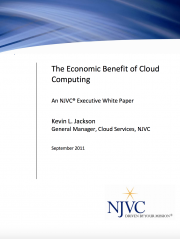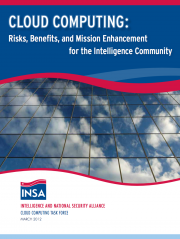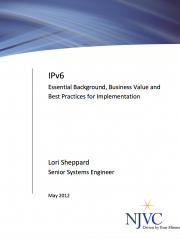Cloud computing is a game changer. The value of the new approach of cloud computing to the provisioning and consuming information technology lies within its ability to enable more efficient and effective information sharing. Its merit is not just in cost savings, but in enhanced mission and business enhancements and improved allocation of resources. Its characteristics not only dramatically transform how an information technology infrastructure is managed, but also the traditional roles of enterprise IT professionals to a more service management orientation—as they become responsible for helping their internal customers better use the externally provided IT services. Building a cloud computing roadmap is essential to unlocking the value of the cloud in a predictable fashion with acceptable risk. This paper outlines the essential steps to constructing a solid cloud computing roadmap.
As a young approach, cloud computing is not without its challenges. Few established tools, procedures and formats, potential risks exist. Primary challenges exist in security controls—particularly related to the protection of sensitive data—lack of federal regulations and compliance standards, and data sovereignty.
The benefits of cloud computing are recognized by the federal government, including the defense and intelligence communities. Dialogue on cloud computing has been ongoing within the government for years, but agencies are still in the early stages of implementing and adopting this new IT approach. The Obama administration has publicly identified cloud computing as a viable solution to help cut the federal budget. The administration adopted a “cloud-first policy” as part of its 25-point IT reform plan, which mandates all federal agencies to develop and implement one cloud-based solution by December 2011 and three such solutions by June 2012. For the federal government, the evolution to the cloud is not something to consider in the future—it is something to put into operation today.
The government can learn many lessons from the private sector pertaining to the implementation of cloud computing solutions, as the private sector embarked on the journey to the cloud some time ago. These valuable lessons include the need to expect a multi-year transition to the cloud, use a consistent cloud opportunity identification process to reduce the risk of project failure and formulate appropriate metrics (economic, operational and service) that are directly tied to mission. Use of a gate-driven cloud adoption process designed to terminate failed projects early in the project lifecycle and deliver measurable capabilities within a quick timeframe is recommended.
The defense and intelligence communities require utility computing methods that scale on demand and enable self discovery and self-service access to secure, timely and relevant information in support of mission. Designing software independence from the hardware through the use of cloud computing solutions allows an operating system, applications and data to “live” across the enterprise and is fundamental to the transformation of compute, storage and network functionality.
Facing an estimated $178 billion in budget cuts during the next several years, the Department of Defense is exploring a number of administrative and structural cost-cutting measures—and IT is one of the first areas for consideration. Defense Secretary Robert Gates recently stated that the agency is reviewing how to reform how it currently uses IT, which costs the agency approximately $37 billion annually. DoD is in the process of consolidating hundreds of data centers and utilizing cloud computing in this shift, and the fact that the defense community is beginning to explore cloud computing through various smaller-scale projects is promising to proponents.
For intelligence professionals, the use of cloud computing can not only make the automation of the interpretation of documents and translation of data into operationally relevant entities and events possible, but it enables real-time continuous processing of the now digital document flow of our adversaries. This commodity also removes the human from this tedious task, allowing intelligence professionals to apply higher order professional analysis and insight.
The human-based documentation exploitation process has led to a reliance on “operationally proven” processes and filters. Instantiated by the use of multi-page structure query language (e.g., Boolean) and the ubiquitous goal of obtaining an appropriate “working set” of data, these processes were born from the need to meet critical decision timelines within a computationally inadequate environment. Cloud techniques and technologies can now be used to work on all the data. And with an ability to leverage the power of a supercomputer at will, the working set requirement is now an anachronism and critical decision timelines can now be more easily met.
Cloud computing can uniquely address important issues associated with mission support—particularly related to its ability to remove information silos among various organizations that have joined forces on the same mission. Moving IT operations to the cloud assists in enhanced collaboration to meet mission needs. It is critical to our national defense. As a bonus, cloud computing also can improve IT enterprise efficiencies and incur marked cost savings during project lifecycles to alleviate some of the pressure of budget reductions for the defense and intelligence agencies.




